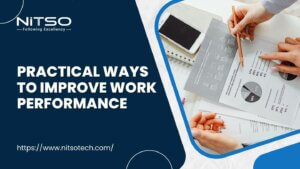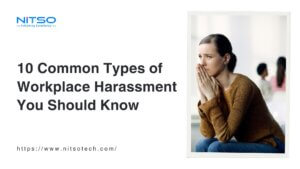Bullying in the workplace is a serious issue that can have devastating effects on individuals and organizations. Being bullied not only causes emotional distress but can also negatively impact job performance, physical health, and mental well-being. It involves the repeated mistreatment, humiliation, or intimidation of an employee, creating a hostile and toxic environment.
This comprehensive guide will provide an in-depth look at various aspects of what is bullying at work, equipping you with the knowledge and strategies needed to recognize signs of bullying behaviour, understand the effects of bullying at work, take action to deal with bullying at work, and most importantly, how to build resilience and stand up to bullying effectively.
Whether you are a victim of bullying yourself or a bystander who wants to learn more to provide support, you will find this guide helpful. By learning how to tackle bullying at work, we can cultivate more positive, respectful and productive work environments for all.
Content On This Page
What is bullying at work?
Bullying at work refers to repeated, unreasonable behaviour directed towards an employee or group of employees that creates a risk to health and safety.
Some examples of bullying behaviour at work include
- Verbal abuse – Yelling, name-calling, insults, excessive criticism or sarcasm.
- Spreading rumours or lies about someone.
- Socially isolating someone – Excluding them from normal workplace interactions.
- Sabotaging someone’s work – Purposely causing errors or setting unrealistic deadlines.
- Intimidating someone – Using threatening gestures or physical/verbal threats.
- Withholding information necessary to do one’s job.
- Taking credit for someone else’s work.
- Making excessive demands unrelated to the job.
- Deliberately changing work guidelines to undermine someone.
- Abusive or offensive jokes, pranks or comments.
- Displays of anger directed at someone.
- Inappropriate emailing, messaging or posting on social media.
Bullying can be verbal, psychological or even physical. It erodes self-confidence and causes stress, anxiety, sleep issues, depression and health problems. Left unchecked, it can create an unsafe, hostile work environment.
Recognizing the signs of bullying at work
Recognizing the signs of bullying is essential to address the issue promptly. It is important to trust your instincts and seek support if you suspect you are being bullied. Here are some signs that may indicate you are being bullied at work:
- You feel humiliated, intimidated or offended by a coworker’s repeated behaviour towards you.
- You dread going to work because you don’t want to face the bully.
- You feel stressed, anxious or even physically ill when you think about the bullying.
- Your job performance is deteriorating due to low morale.
- You are excluded from work-related social gatherings by the bully.
- The bully spreads rumours or gossip about you.
- Your workload is purposely increased unreasonably by the bully.
- The bully takes credit for your work or ideas.
- You are constantly criticized, yelled at or mocked by the bully.
- The bully sabotages your work by causing errors or missing deadlines.
- You feel manipulated or humiliated by abusive jokes or comments.
- The bully has personal attacks or angry outbursts directed at you.
- You receive harassing messages from the bully.
What are the effects of bullying on individuals and organizations?
Bullying has far-reaching effects on both individuals and organizations. Here are some of the common effects that workplace bullying can have on individuals and organizations:
For Individuals
- Increased stress, anxiety and depression
- Lower self-esteem and self-confidence
- Difficulty concentrating, lack of motivation
- Headaches, fatigue, insomnia and other health issues
- Absenteeism and reduced productivity
- Isolation and withdrawal from social events
- Thoughts of suicide in extreme cases
For Organizations
- Higher turnover and recruitment costs
- Lower morale and company culture
- Reduced collaboration and communication
- Drop in productivity and performance
- Absenteeism and higher sick leaves
- Poor customer experiences and reputation
- Legal costs if bullying leads to lawsuits
- Inability to attract and retain top talent
How to deal with bullying at work: 8 Strategies for Resilience
Dealing with bullying at work requires resilience and a proactive approach. Here are some strategies to help you handle bullying effectively:
- Document incidents: Keep a record of all bullying incidents, including dates, times, locations, and descriptions of what occurred. This documentation will be valuable if you decide to file a complaint or seek legal action.
- Speak up: Politely confront the bully about their behaviour and insist it stops. Stick to facts and stay calm. If too anxious, practice with a friend first.
- Seek support: Reach out to trusted colleagues, friends, or family members to talk about your experiences. Their support can provide you with emotional strength and guidance on how to handle the situation.
- Set boundaries: Clearly communicate your boundaries to the bully. Let them know that their behaviour is unacceptable and that you will not tolerate mistreatment. Asserting yourself can sometimes deter further bullying.
- Practice self-care: Taking care of yourself is crucial when dealing with bullying. Engage in activities that reduce stress and promote well-being, such as exercise, meditation, or hobbies. This will help you maintain your mental and emotional resilience.
- Report the bullying: If the situation does not improve or becomes unbearable, report the bullying to your supervisor, human resources department, or any other appropriate authority within your organization. Follow the established procedures to ensure your complaint is taken seriously and appropriately addressed.
- Stay positive: Remember the bully’s behavior reflects on them, not you. Focus on your strengths and self-worth.
- Evaluate options: If the bullying persists, consider requesting a transfer, reporting to HR or management, or leaving for a healthier workplace.
Understanding the difference between bullying and harassment at work
It is important to distinguish between bullying and harassment at work, as they have different legal implications. While bullying refers to repeated mistreatment and intimidation, harassment involves behaviour based on protected characteristics such as gender, race, religion, or disability. Both forms of mistreatment are unacceptable, but understanding the distinction will help you navigate your rights and options more effectively.
Here is a table comparing the differences between bullying and harassment at work:
Filing a bullying complaint at work: Your rights and options
When faced with bullying at work, it is important to know your rights and the options available to you. Most organizations have policies and procedures in place to address workplace bullying. Here are some tips on filing a bullying complaint at work and understanding your rights and options:
- Review your company’s anti-bullying or harassment policy. Follow the procedures outlined for filing an internal complaint.
- Document all incidents – dates, times, locations, witnesses and details of what happened. Save emails, notes, photos or recordings as evidence.
- File the complaint in writing with your HR department. Explain how you have been bullied and provide evidence. Request interim measures like transfer or leave if needed.
- If HR does not take adequate action, file the complaint with your boss or senior management. Approach calmly and state just the facts.
- Understand that bullying may sometimes cross legal lines. Discrimination, threats, physical abuse etc. may enable police complaints or lawsuits. Consult a labour lawyer.
- If the bullying poses an immediate health or safety risk, you can file for a restraining order and take paid or unpaid leave.
- Keep records of all complaints filed, meetings, results of investigations and actions taken by the company.
- You have a right to work in a safe environment free from harassment or discrimination. If policies fail, leaving the job may be your best option.
- Disclose any psychological impact during complaints. Seek counseling and medical help. This demonstrates severity.
Familiarize yourself with these policies and consult with human resources or a legal professional if necessary. Consider filing a formal complaint, as this can initiate an investigation and potentially lead to disciplinary action against the bully.
Creating a positive work environment: Promoting a culture of respect
Preventing workplace bullying starts with creating a positive work environment that promotes respect and inclusivity. Organizations should establish clear anti-bullying policies and provide training to employees on acceptable behaviour. Encourage open communication, foster a culture of empathy and support, and hold individuals accountable for their actions. By cultivating a respectful work environment, the risk of bullying can be significantly reduced.
Thriving in a toxic environment: Developing resilience skills
In some cases, despite efforts to address bullying, a toxic work environment may persist. To thrive in such circumstances, developing resilience skills is essential. This involves building emotional resilience, setting boundaries, developing coping mechanisms, and seeking support from outside the workplace. Focus on your personal growth, maintain a positive mindset, and consider seeking opportunities elsewhere if the toxicity becomes unbearable.
Conclusion: Taking a stand against workplace bullying and fostering a healthy work environment
Workplace bullying is a serious issue that affects individuals and organizations alike. By understanding the signs of bullying at work, knowing your rights, and implementing strategies for resilience, you can effectively handle bullying and contribute to the creation of a healthy work environment.
Remember, taking a stand against workplace bullying is not only about your well-being but also about fostering a culture of respect and inclusivity for everyone. Together, we can create a workplace free from bullying and thrive in a positive and supportive atmosphere.
If you are currently experiencing bullying at work, remember that you are not alone. Reach out to a trusted colleague, friend, or family member for support and guidance. Additionally, consult your organization’s policies and procedures on how to address workplace bullying. By taking action, you can put an end to the mistreatment and pave the way for a healthier work environment.
Article you might be interested in How to Spot and Handle a Toxic Work Environment?








0 Comments